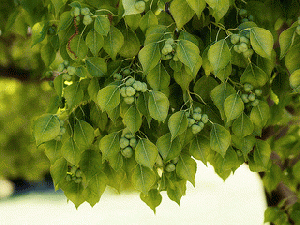The Obama administration's "Clean Power Plan," which is designed to reduce carbon dioxide emissions by 32% of 2005 levels by 2030, poses a substantial challenge to the energy sector, particularly where coal is the primary fuel. Topping the list of alternative, renewable sources of energy are wind and solar.
Depending on one's point of view, solar energy brings to mind either rows of static photovoltaic panels or rows of living photosynthetic plants, each of which reduces carbon emissions: photovoltaic panels because they emit no gas, and photosynthetic plants because the carbon dioxide they release upon combustion is balanced by the carbon dioxide they consume through growth and the biosynthesis of fuel.
Louisiana and much of the South is amenable to both types of solar capture, but its climate and access to water make it particularly well-suited to the cultivation of energy crops. The Chinese tallow tree, because of its robust growth and energy-rich content of its abundant seeds is a prime contender. While condemned by some because it can be invasive when not properly contained, this tree is an ideal choice as an alternative, renewable source of fuel for the production of electricity.
http://www.youtube.com/watch?v=-R0v7u1k8L4
The above video is a brief primer on the planting and harvesting of orchards based on technology developed for the cultivation and harvesting of olive trees, with examples of mechanical harvesters that could be adapted for use with tallow trees, whose energy-rich seeds could serve as a partial substitute and eventual replacement for coal in power plants that generate electricity.
It is incumbent upon the energy industry to embrace all forms of alternative energy sources. Planning now for mass cultivation of sustainable, renewable energy orchards stocked with Chinese tallow trees will help insure that future generations have ample access to electricity. For more information, see: www.tallowfuel.com.
(Article changed on August 21, 2015 at 12:10)
(Article changed on August 21, 2015 at 12:14)





